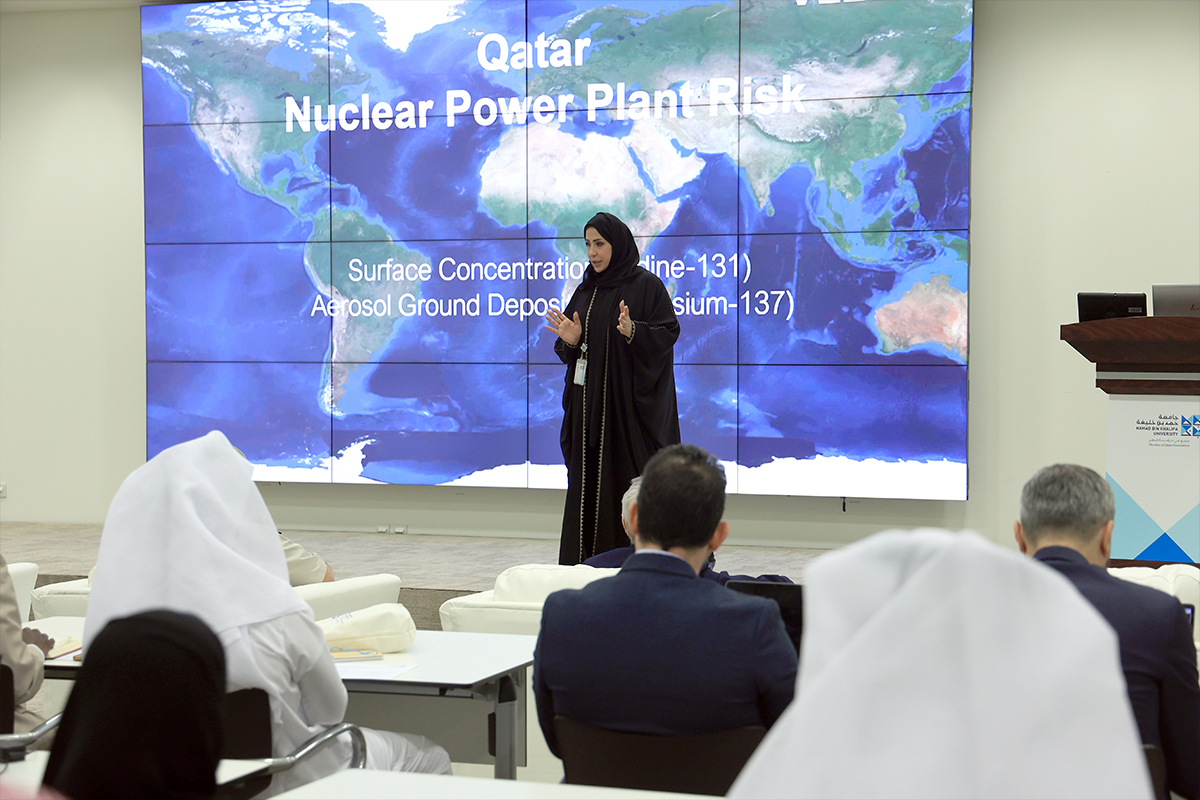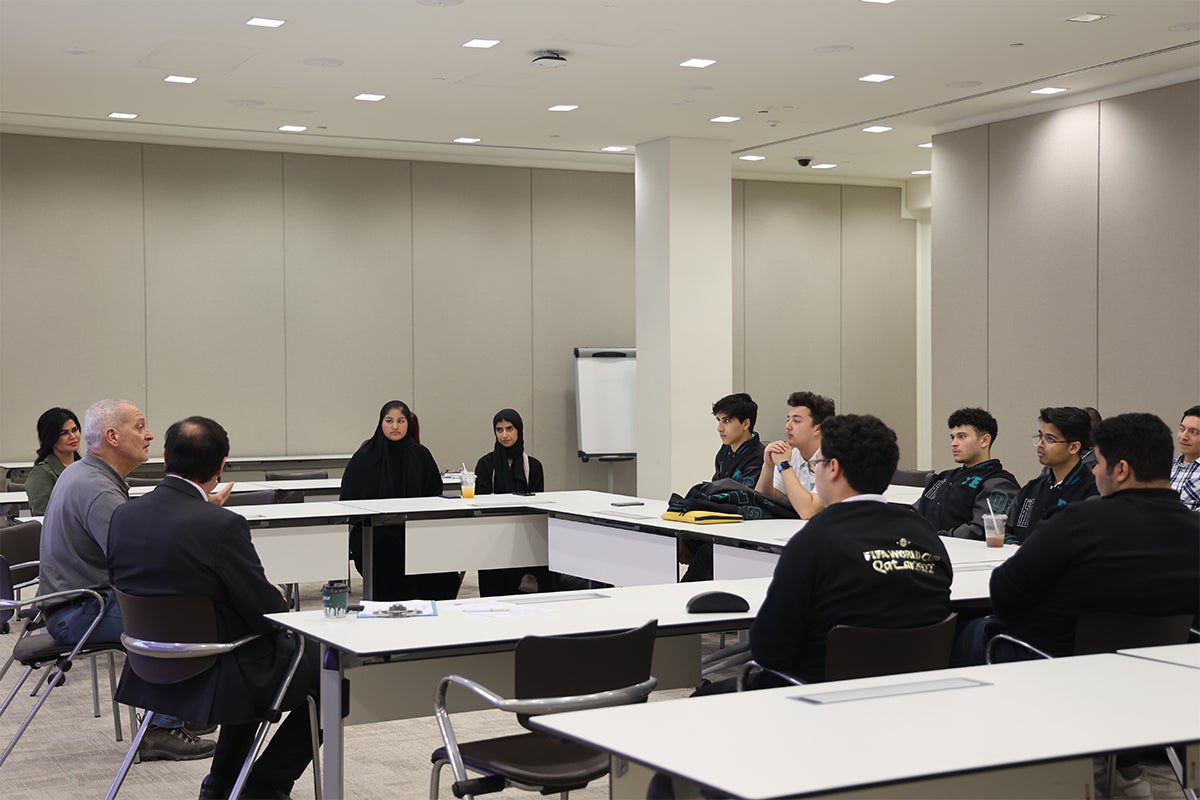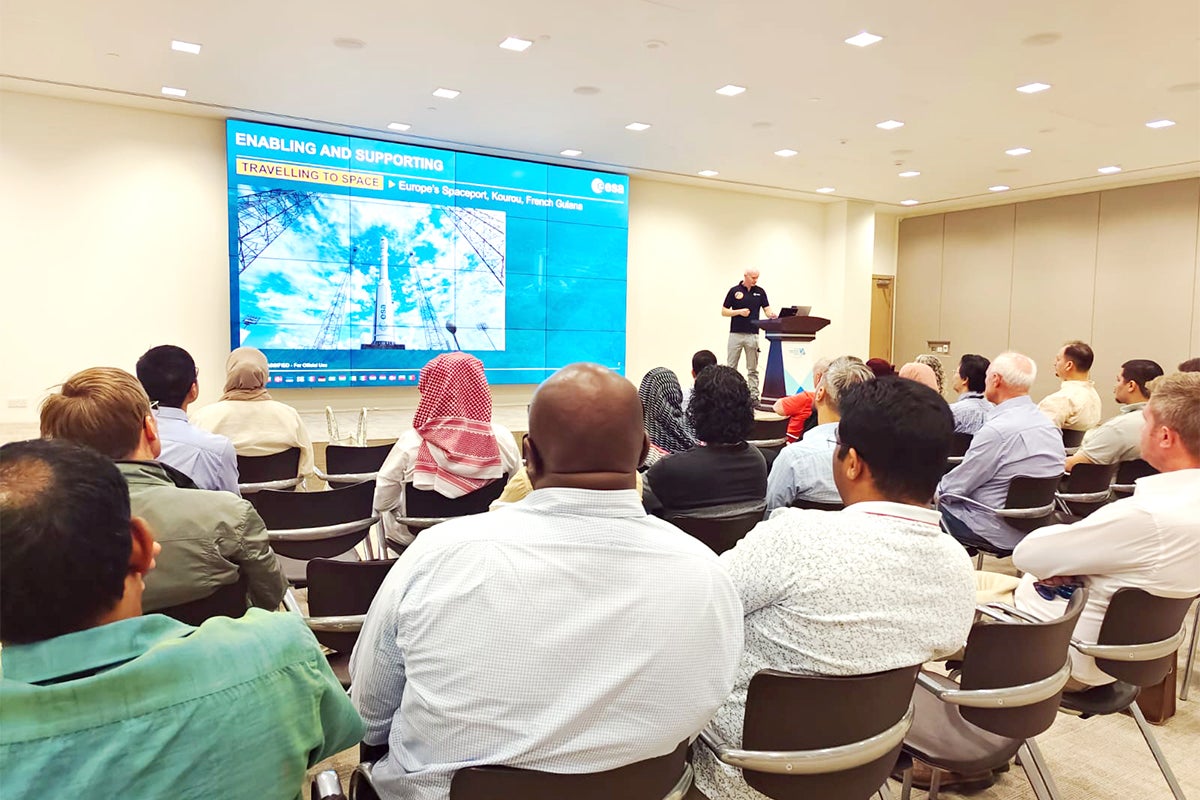The three years-long project focused on modeling the dispersion of radionuclides from hypothetical accidents at nuclear power plants throughout the Middle East

The Qatar Environment and Energy Research Institute (QEERI) at Hamad Bin Khalifa University (HBKU) and The Cyprus Institute (Cyl) jointly organized a seminar on March 5, 2023, in Doha, Qatar, to share the findings of a joint research project simulating the atmospheric dispersion of radioactivity from potential nuclear power plant accidents in the Middle East, where several nuclear facilities are under construction or becoming operational, and additional ones are planned in this region with unique seismic and climatological conditions.
Scientists from The Natural and Environmental Hazards Observatory (NEHO) at QEERI and the Climate and Atmosphere Research Center (CARE-C) at the Cyprus Institute presented the outcomes of their three yearslong collaboration that developed the capability to model and forecast public health and environmental impacts in Qatar from simulated accidents. A pioneering research work in Qatar and the Gulf region, the project facilitates development of recommendations for hazard preparedness, and new-found capacity for risk management and accident response at the national strategic level.
A risk assessment of atmospheric deposition and population exposure to radioactivity following hypothetical accidents at nuclear power plants was conducted as part of the project. Detailed simulations showed that in case of a nuclear accident, radionuclides can affect Doha, and more than 90% of the ground deposition of condensed radionuclides in Qatar can be expected to occur within 4 days. Like anywhere else in the world, the relative risk is higher during the cold period of the year by a factor of 2.
Representatives from Qatar’s government and public sectors, including Qatar Civil Defense, Ministry of Defense, Ministry of Foreign Affairs, Qatar Civil Council, Ministry of Environment and Climate Change, Ministry of Commerce and Industry, Qatar Aviation, Qatar University, and Qatar General Electricity and Water Corp (KAHRAMAA), attended the event to learn about the research and discuss its applications and policy implications with the research team. After a series of technical presentations, stakeholders attended a roundtable discussion and concluded recommendation for further collaboration and project way forward.
"During the seminar, our main focus was on how to use the developed modeling tools to support national authorities in their emergency preparedness and response plans in the event of a nuclear or other major industrial accident," said Dr. Huda Al-Sulaiti, Senior Research Director of the Natural and Environmental Hazards Observatory at QEERI. "The attendees discussed important next steps and made necessary recommendations on how to further enhance the early warning systems."
Speaking about the seminar, Dr. Marc Vermeersch, Executive Director at QEERI, said, “We were proud to share the results of this technical and scientific collaboration between NEHO’s team of experts and Cyl, a globally renowned institution in this field, with stakeholders from the government and public sectors. At QEERI, we look forward to building upon this research in future with our partners in Qatar to help develop a methodology for environmental hazard risk and vulnerability assessments in the Middle East.”
Established in 2011, QEERI operates according to a mandate to anticipate and solve critical challenges facing Qatar and the world by conducting market-driven research and fulfilling national advisory and educational roles. The Institute actively leverages common interests through partnerships and collaborations with top-tier local and international partners, building expertise and research capacity in Qatar.







